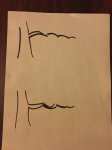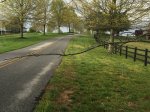markyscott
Imperial Masterpiece
Here also is an example of a branch built in the manner that Adair discussed. As you can see, the downward shoot was eliminated in every case. I don't think this is a Boon thing - it's certainly how he was taught and how he teaches pruning, but neither of these examples are from Boon's garden.

Pick a maple you admire and study the branching - it's generally easy to see how they were built by looking at the structure. This is a great maple to me - I really like the branch structure. So I eliminate the downward growth and wire the upward growth down. That's how this tree was developed and I want my branch structure to look like this.

Pick a maple you admire and study the branching - it's generally easy to see how they were built by looking at the structure. This is a great maple to me - I really like the branch structure. So I eliminate the downward growth and wire the upward growth down. That's how this tree was developed and I want my branch structure to look like this.












